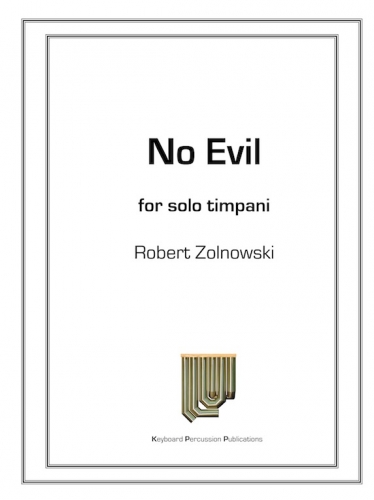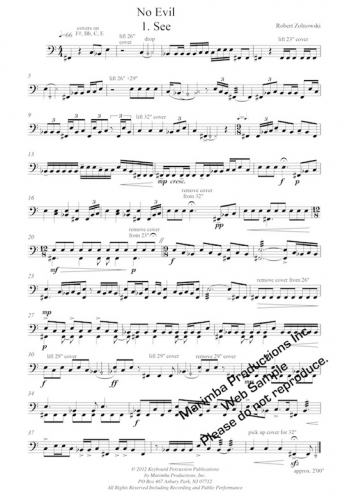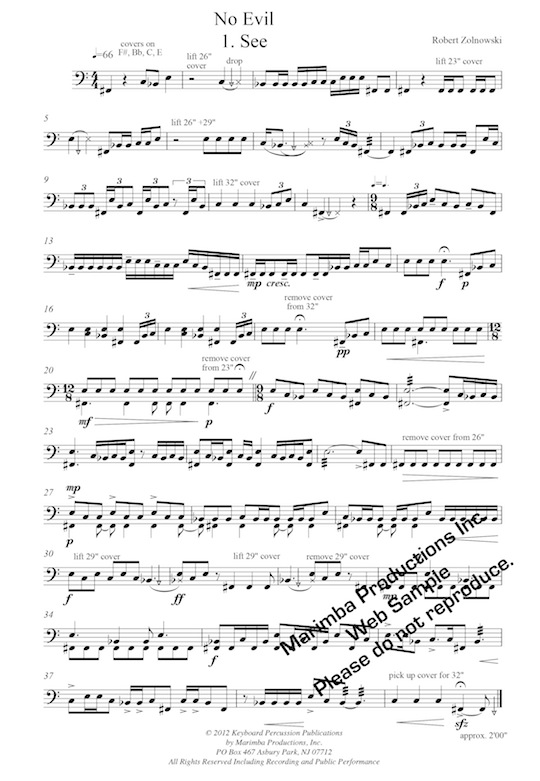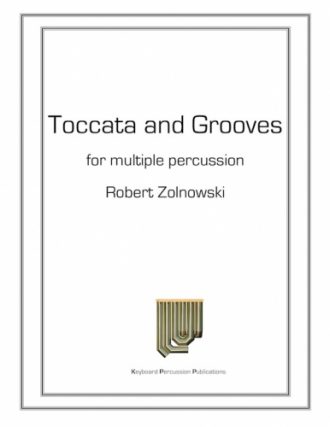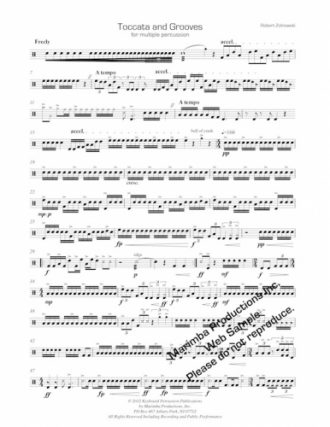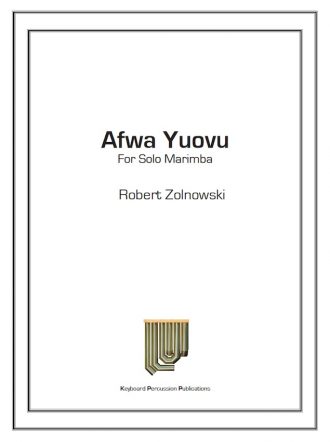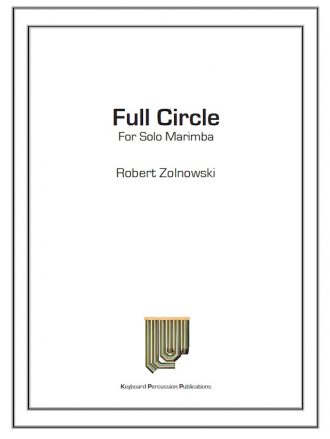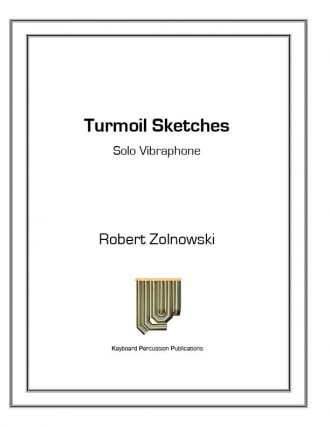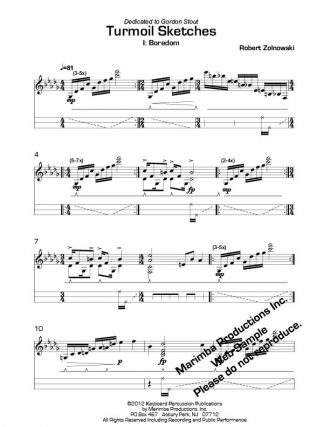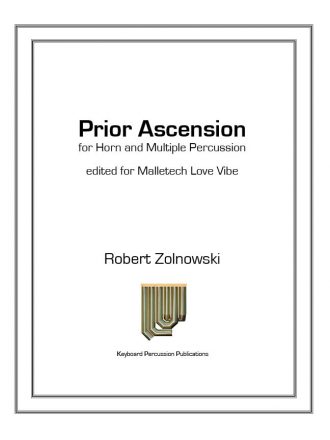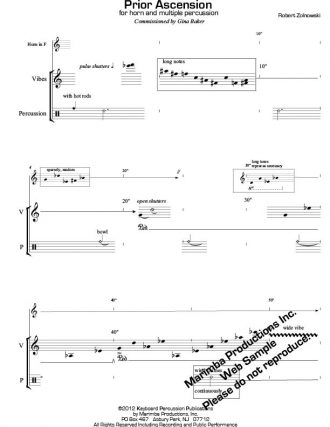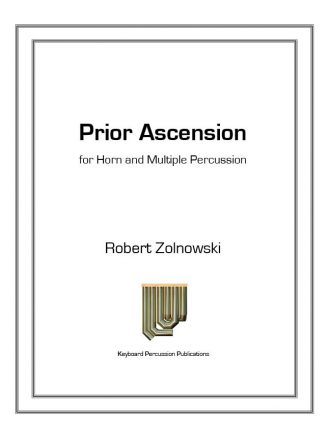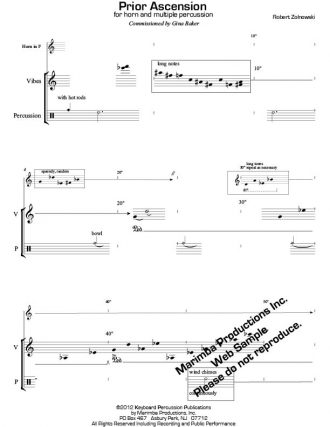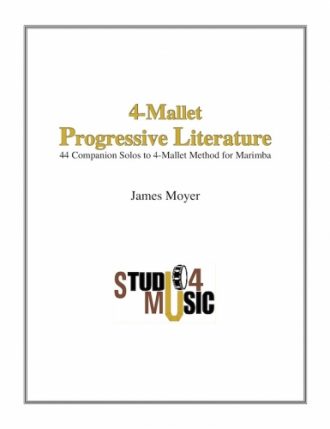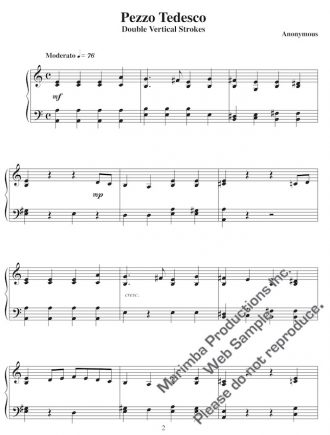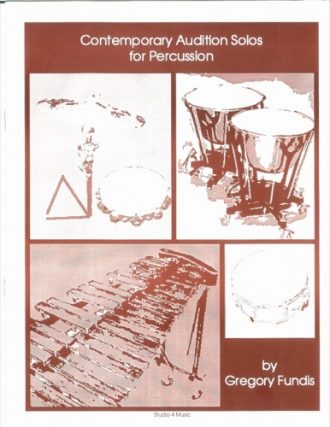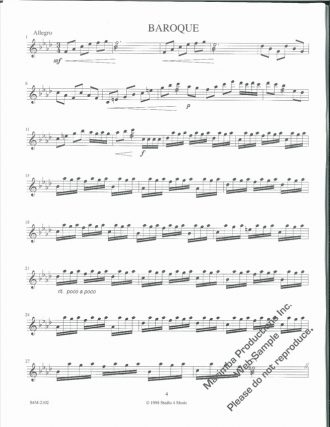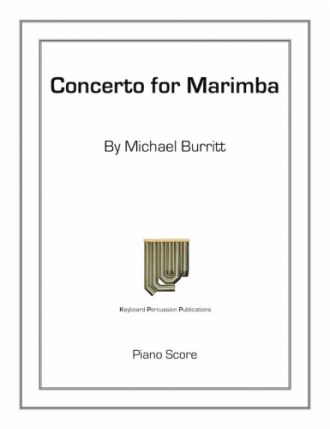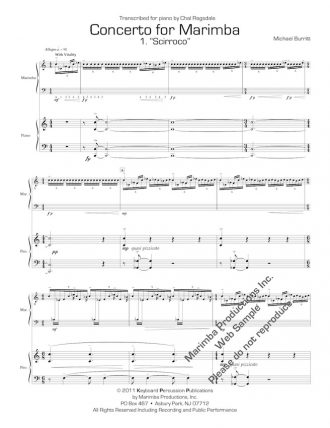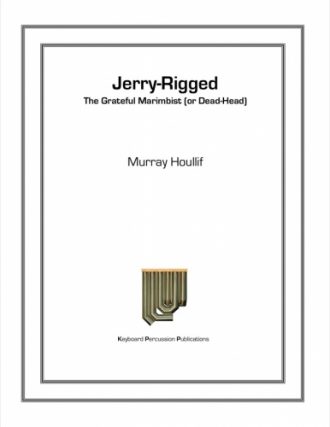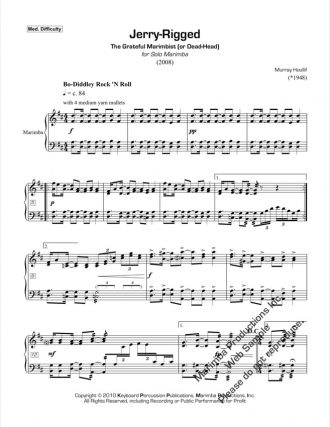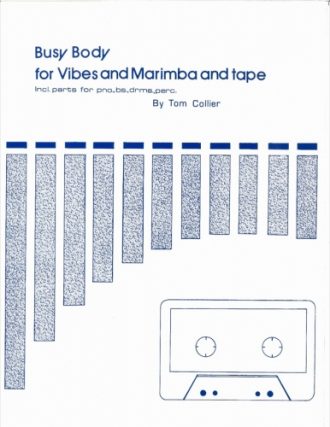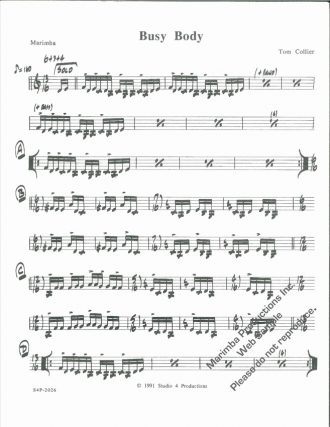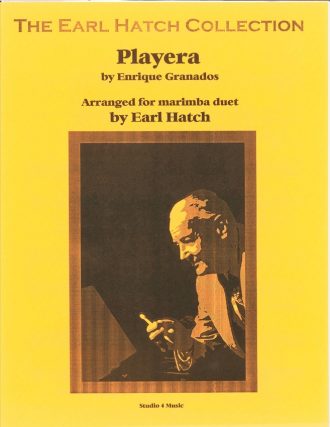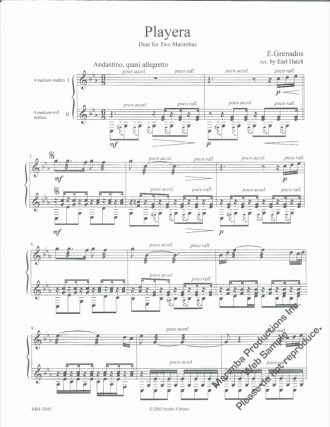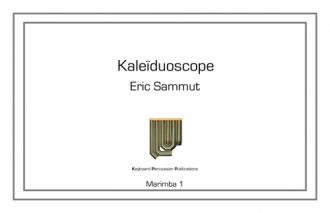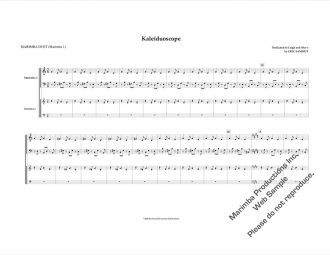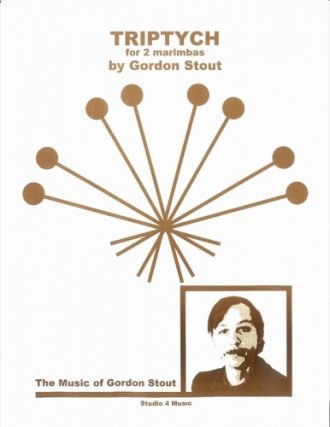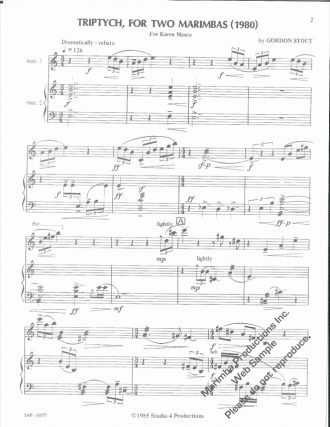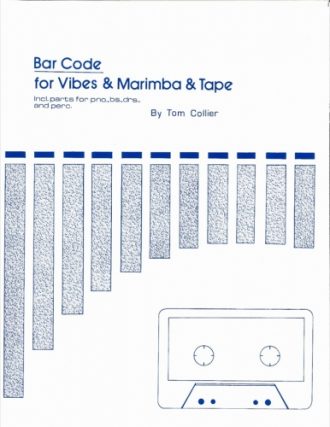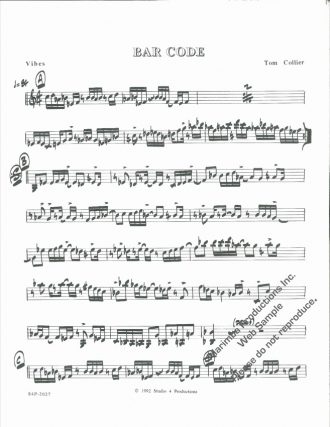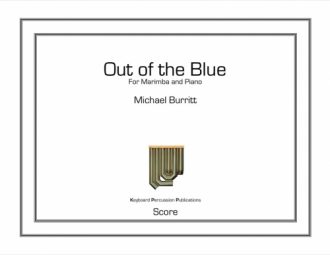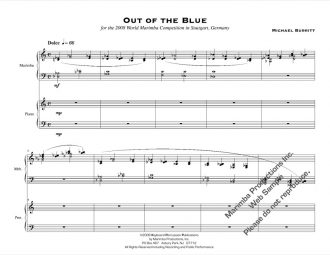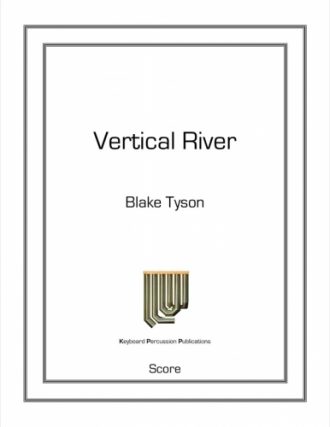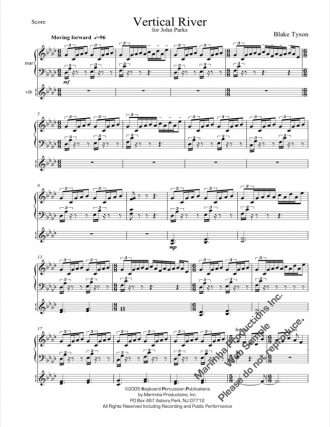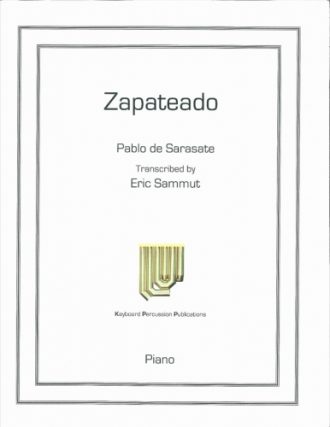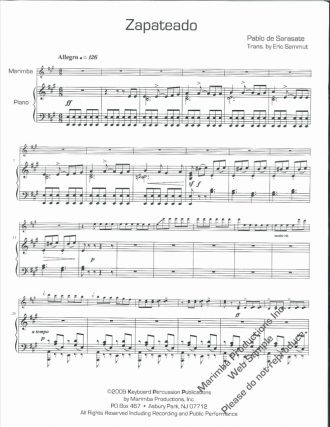Solo for 4 timpani: 32″, 29″, 26″, 23″
No Evil is a three-movement work for timpani based on the Chinese proverb, “see no evil, hear no evil, speak no evil.” Each movement is based on one of these proverbs. The first movement, See, requires the use of covers on the drums symbolizing hands covering the eyes. Movement two, Hear, is based on a well-known death march motive. The final movement, Speak, includes text in Latin and other vocal effects. “Evil” is portrayed throughout the piece with the use of tritones and other dissonant intervals.
Intermediate to advanced technique is required for a successful performance of this theatrical timpani solo. Each movement is about two minutes in length, making the entire three-movement suite appropriate for the undergraduate timpanist.
The first movement is notated with a tempo of quarter note equals 66 and starts with covers on all the timpani. The performer is directed in appropriate areas of rests to lift the covers and drop them (the performer is given the instruction to have thin “fiberboard/cardboard” covers for the timpani as well as to play in the center of the drumhead when playing on the covers). By the time the first movement is completed, all covers are removed.
The second movement is faster (145-160 bpm), changes pitches from the first movement, and the performer strikes the bowls of the timpani in intermittent passages. Dramatic shifts in the printed dynamics and notated accents for this movement will challenge the performer’s skills to present lyrical musical phrases at the indicated tempo. This second movement ends with a rallentando and soft cadential roll on the lowest kettle.
The third movement, also notated quite fast (quarter note equals 150), is the most whimsical of this suite because the performer has “notated” spoken words in coordination with playing the timpani (the most frequent words, “Ego Subsisto Sermo,” translate to “I need to stop talking”). The consequence is that the timpanist is directed to be a spoken accompanist to the sounds of the timpani with specific rhythms (or sprechstimme) to the spoke words.
Although printed in three separate movements, this composition should be performed as an entire unit and would be an excellent selection for a junior or senior undergraduate recital.
— Jim Lambert, Percussive Notes — November 2012

